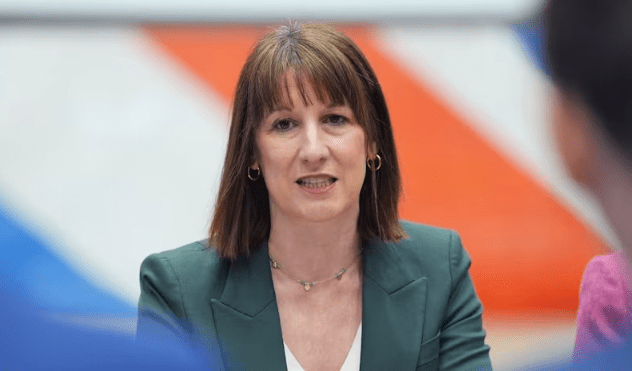A sweeping new tax crackdown on savings accounts will hit millions of Britons from April 2027, with the Government preparing to collect more tax on savings interest directly from wages.
Chancellor Rachel Reeves has quietly signed off on rules that will compel banks to hand over more detailed information about customers’ savings to HM Revenue & Customs (HMRC). This includes requiring savers—both new and existing account holders, to provide their National Insurance numbers.
The move is designed to make it far easier for HMRC to spot when taxpayers exceed their personal savings allowance and to deduct the tax without relying on self-assessment.
Current account customers are exempt for now, though HMRC insiders have not ruled out extending the changes later.
The Treasury admits the shake-up won’t come cheap. In a July consultation response, it acknowledged there would be “significant costs”, but insisted: “It is vital we improve our ability to match third-party data to taxpayer records.”
The timing is no accident. The National Institute of Economic and Social Research (NIESR) has warned of slow growth, a weakening job market, and Labour’s costly U-turns on spending, leaving an estimated £50bn black hole ahead of the autumn Budget.
It follows mounting scrutiny over the Chancellor’s fiscal plans, including debates on whether taxes will rise or spending will plunge.
Right now, banks already share interest earnings with HMRC. But up to 20% of the data is “unreadable”, meaning tax can’t be automatically collected.
This year, 3.35 million savers are expected to have taxable savings income, with 2.64 million set to receive a bill, 120,000 more than last year. The personal savings allowance remains £1,000 for basic-rate taxpayers, £500 for higher-rate taxpayers, and zero for additional-rate taxpayers.
Mike Warburton, Telegraph columnist and tax specialist, said: “HMRC is now attempting to collect data on interest directly from the banks as a way of getting the tax information correct without relying on self-assessment.”
He urged savers to keep detailed personal records to check HMRC’s figures.
Former Conservative cabinet minister Sir David Davis slammed the move, warning: “The state is becoming more and more intrusive as time goes by. The most intrusive part of the state is HMRC. This is unsurprising. It’s wrong. It’s overreach by HMRC.”
The Government says the changes will cost HMRC around £35m. But banks have warned their own costs could reach £10m each, with older savings accounts taking years to adapt.
UK Finance, representing retail banks, described it as a “massive undertaking” and pointed out that only about 10% of customers respond to letters.
Another concern is that under-16s, who can legally hold savings accounts, do not have National Insurance numbers.
The Low-Income Tax Reform Group (LITRG) and the Association of Taxation Technicians (ATT) emphasize the importance of transparency.
LITRG said: “This data should be ‘translated’ for taxpayers so that it is easily understandable and consistent, and the most robust way to achieve this is for HMRC to set out the format of any statements.”
They also cautioned that auto-generated bills might mean savers don’t fully understand what they are paying, or whether it’s correct.
Above the personal allowance, interest is taxed at the same rate as income tax. HMRC usually collects this by altering a taxpayer’s PAYE code. Officials can go back four years to issue a bill, six for “careless behaviour,” and up to 20 years in suspected cases of evasion.
An HMRC spokesman defended the shake-up, stating: “These reforms will make it easier for customers to get their tax right first time, including paying tax on savings income, by improving our ability to match third-party data to taxpayer records.
Making better use of data will also help us prevent error and fraud on behalf of the honest majority.”
For savers, the message is clear. The grace period is ending. From 2027, the taxman will have a far sharper eye on your interest earnings.






